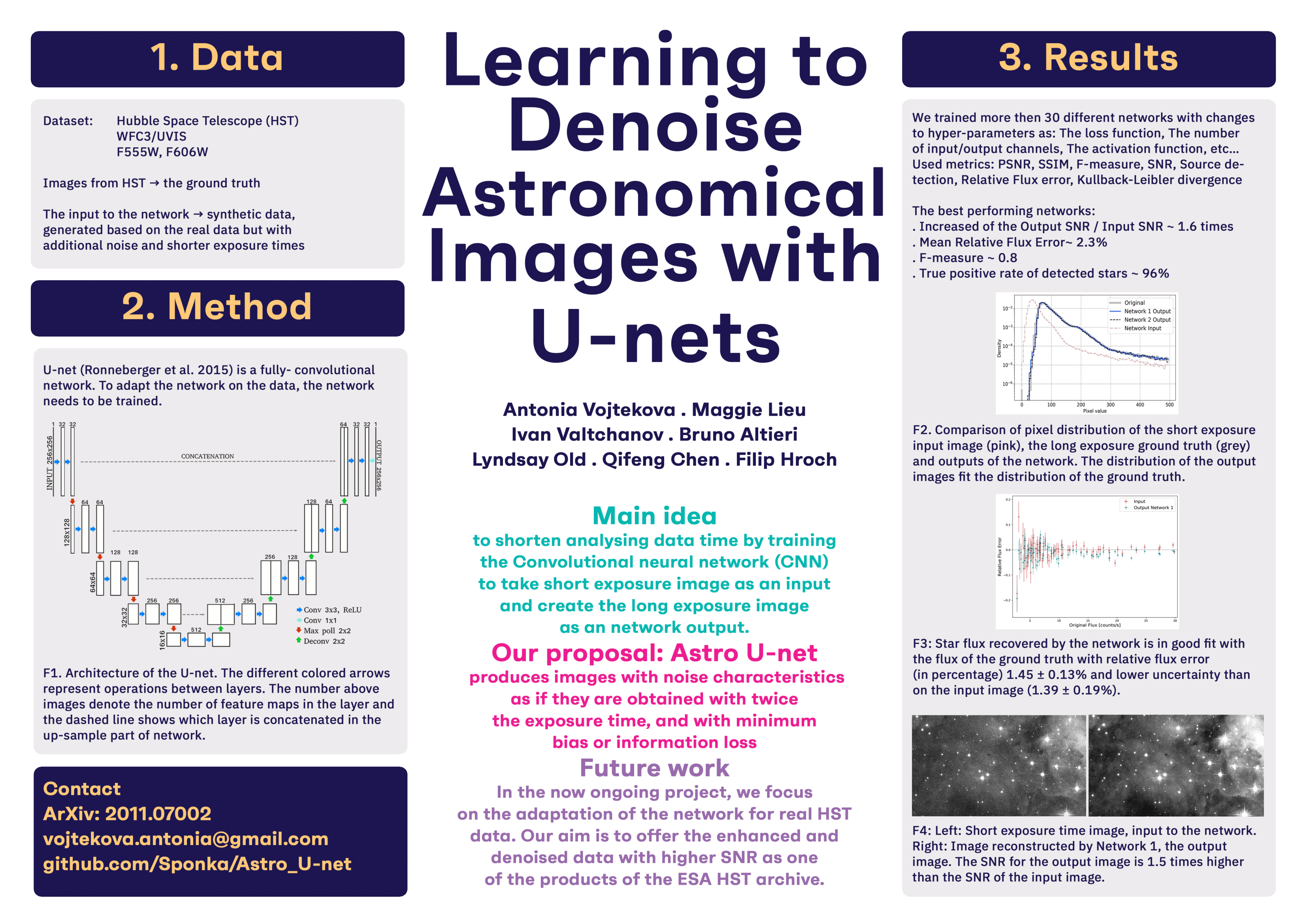Enhancement and denoising of HST data - Machine Learning Group
Learning to Denoise Astronomical Images with U-nets
Antonia Vojtekova, Maggie Lieu, Ivan Valtchanov, Bruno Altieri, Lyndsay Old, Qifeng Chen, Filip Hroch
Astronomical images are essential for exploring and understanding the Universe. Images often contain additive noise, which makes denoising a mandatory step in post-processing data before further data analysis. In order to maximise the efficiency and information gain in the post-processing of astronomical imaging, we decided to turn on machine learning. We propose Astro U-net, a fully-convolution neural network for image denoising and enhancement.
Project stages:
- Training with synthetic data
- Training with real data
Training with real data
Currently we are working on applying the network on real HST data. Selected data set:
- WFC3/UVIS
- F555W, F606W, F814W
- extension FLT/FLT
The results will be published as soon as we find suitable hyperparameter configuration. For questions do not hesitate to contact us.
Training with synthetic data
Our data set contains 200 images from the Hubble Space Telescope (HST) archive that are divided into training, evaluation and validation data sets. The images are captured by the UVIS (UV/Visible channel) detector on the Wide Field Camera 3 (WFC3), which is a ∼ 4000 × 4000 pixel detector of two CCDs (2051 × 4096 each), and a 31 pixel gap between them. From a broad variety of filters, we select two wide filters – F555W and F606W that correspond to 530.8 and 588.7 nm pivot wavelengths. Henceforth we refer to these images as the real data. They are used as the ground truth when training the network. For the input to the network we use synthetic data that are generated based on the real data but with additional noise and shorter exposure times. for more information about synthetic data read the paper - Section 2.1.
During this project we trained more then 30 different networks with changes to the loss function, number of input/output channels, various exposure time ratios and different types of up-sampling. In comparison with current methods that use stacking of large numbers of exposures, our method, Astro U-net, is less time consuming and is able to yield results of equivalent quality. Astro U-net is a fully-convolutional neural network for image de-noising and enhancement, which only requires the exposure time ratio as input. Moreover, Astro U-net can handle images of different scales. For the results see the paper.
Results
Paper: A. Vojtekova et al. 2020, MNRAS, Learning to Denoise Astronomical Images with U-nets
Presentation: ESAC TechTalk

